












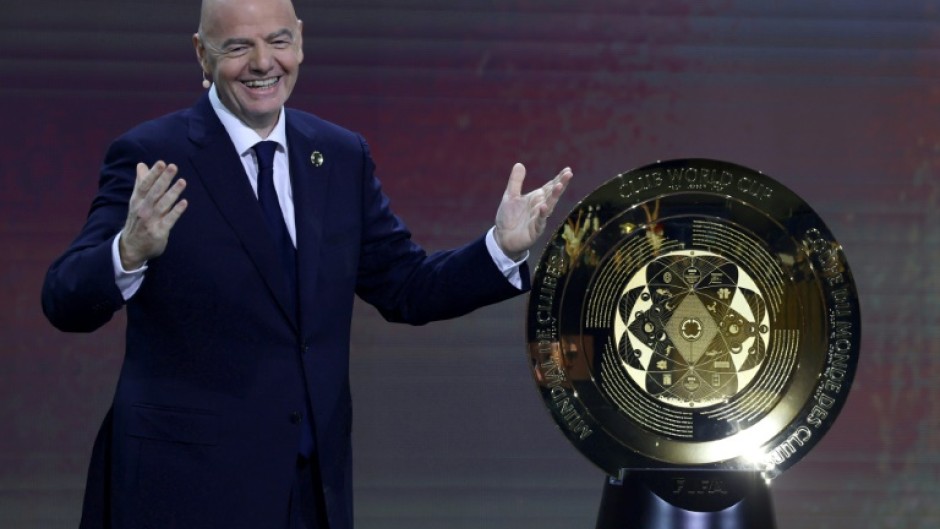
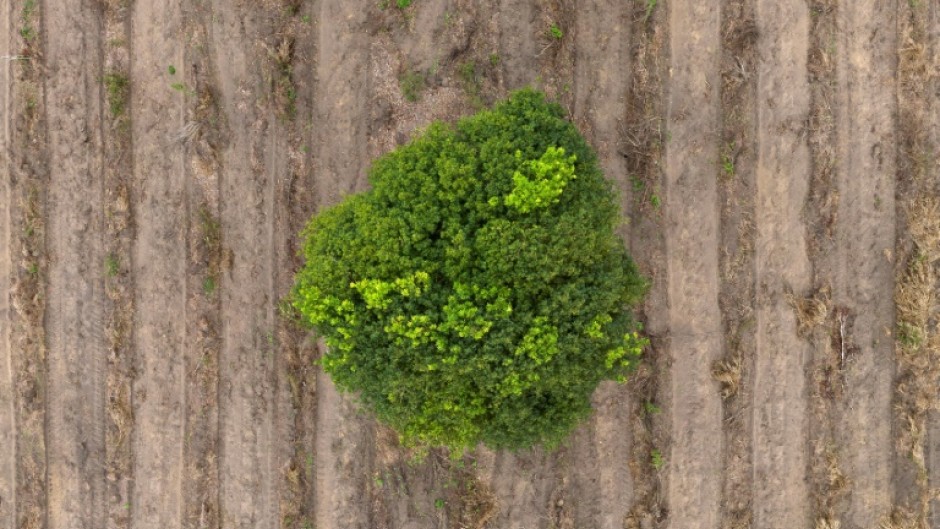
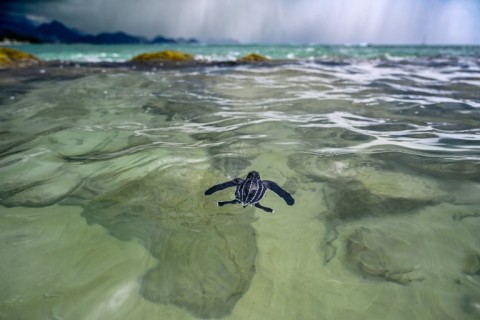
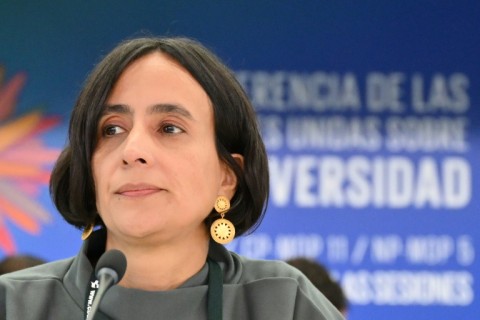
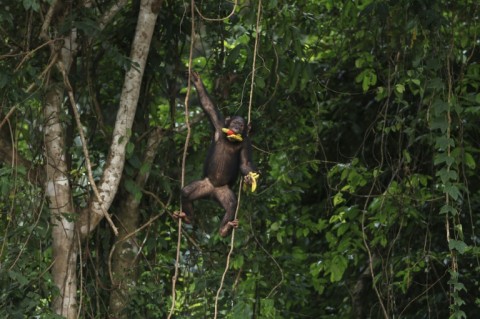






Tennis fans are once again filling Melbourne Park for the 2025 Australian Open, after setting an all-time attendance record in 2024.
The Australian Open is one of four annual Grand Slam events, alongside the French Open, Wimbledon and US Open, which bring together the world’s best men’s and women’s players.
These athletes strive to claim not just the championship trophy, but precious ranking points as well as huge pay cheques: this year’s Australian Open prize pool is $A96.5 million and winners of the men’s and women’s singles events will each take home $3.5 million.
Why though, are the lengths of the men’s (five sets) and women’s (three sets) matches different?
There has been long-standing debate about the appropriate length of men’s and women’s tennis matches.
In Grand Slam events, men’s matches extend to five sets, while women’s matches remain best-of-three. In most other tournaments, men and women both play best-of-three sets.
This difference is often raised when assessing equal prize money at some events, with some arguing women should not be awarded equal prize money if they play shorter matches.
Women are paid equally at all the Grand Slam tournaments but not all lower-level events.
Luckily, tennis prize money isn’t based on an hourly wage system – that’s why women don’t get less for dominating their opponents in two sets.
But what if the women played best-of-five?
Women competed in best-of-five matches more than 130 years ago.
The United States’ national championships from 1891 to 1901 featured five set matches for women. The New York Times described the 1891 clash between Mabel Cahill and Ellen Roosevelt as being: “fought to the end with wonderful tenacity”.
But these women’s matches were shortened to best of three sets in 1901 by the United States National Lawn Tennis Association Council – a body made up entirely of men.
The decision was made despite the demonstrated ability for women to play five set matches, and does seem to parallel similar examples of men deciding with no evidence that women are not suited for sport of a particular nature.
This mindset led to the nearly 50-year ban of women playing soccer from 1921 to 1970.
In athletics, women were banned from competing in the 800-metre race from 1928 until 1960, at least partially because the media seemed shocked that in the 1928 Olympic Games in Amsterdam, some women fell to the ground in exhaustion after sprinting for gold in the 800-metre event.
It took until 1967 before the first woman ran the Boston Marathon – and Kathrine Switzer had to do so covertly, battling men trying to push her off the course. But her efforts led to the inclusion of the women’s marathon to the Olympics in 1984.
Back to tennis.
In 1984, the Women’s Tennis Association final featured a best-of-five set format from 1984 to 1998, famously highlighted by the decider between Monica Seles and Gabriela Sabatini in 1990 at Madison Square Garden.
Then in 1994, the Australian Open briefly considered introducing best-of-five finals for women, which would have been the first Grand Slam to do so.
Supporters of the move believed it would provide a more complete test of skill and endurance, and offer a more compelling spectacle. However, the experiment did not go forward.
The preparation and recovery management of women in tennis has improved further from when the Australian Open proposed “the experiment” in 1994.
But it should have never been a question of whether the physiology of women could handle longer events.
In fact, evidence supports women might be built for it. From marathon records continuing to fall to women excelling in ultra-endurance events, the longer the event, the better they perform.
So maybe the stamina needed for a best-of-five sets is ideal for women.
While society debates whether women should play five sets, a better question may be: do five sets achieve the best outcome for all players and fans in the age of shorter format versions of sports?
During five-set matches, evidence shows aspects of performance can plateau in the middle stages – first serve velocity has a parabolic approach, meaning servers hold back during the middle sets.
This is likely the athlete conserving energy, often leading to a less dynamic contest in the middle stages in preparation for the “last set”, raising the question of whether men should actually only play best-of-three sets.
Tennis fans will likely continue to debate the value of those third and fourth sets from the perspective of attention span versus tradition.
What is undeniable is that men have the opportunity to showcase their mental strength and stamina in best-of-five matches.
Why aren’t all players given this opportunity?![]()
Sophia Nimphius, Professor of Human Performance, Edith Cowan University and Caitlin Fox-Harding, Senior Lecturer/Researcher, Edith Cowan University
This article is republished from The Conversation under a Creative Commons license. Read the original article.
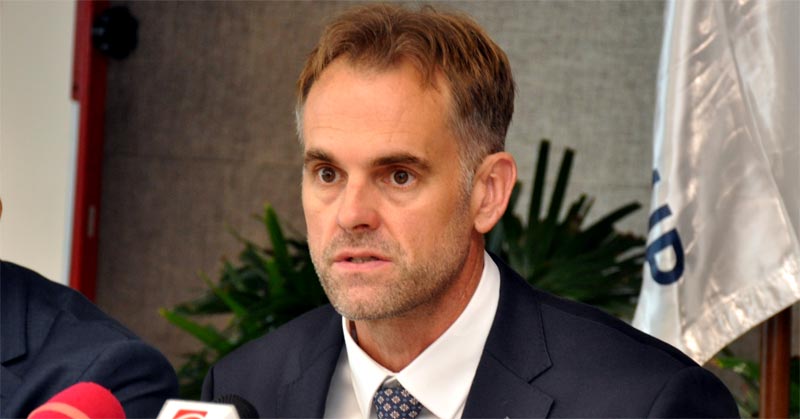



 Ross and Hugo Turner attempting to break a record, flying a paraglider-style aircraft at 10,000ft in the French Alps – via SWNS
Ross and Hugo Turner attempting to break a record, flying a paraglider-style aircraft at 10,000ft in the French Alps – via SWNS Ross and Hugo, the Turner Twins, on a para-motor flying over French Alps breaking altitude record – via SWNS
Ross and Hugo, the Turner Twins, on a para-motor flying over French Alps breaking altitude record – via SWNS The Turner Twins making final preparations for a world altitude record in a tandem electric paramotor – SWNS
The Turner Twins making final preparations for a world altitude record in a tandem electric paramotor – SWNSEighteen-year-old Indian prodigy Gukesh Dommaraju has become the new world chess champion, winning the final game of the title match after a dramatic blunder from the reigning champ, China’s Ding Liren.
Gukesh is now the youngest world champion in chess history, and the first Indian to hold the title since Vishwanathan Anand lost it to Magnus Carlsen in 2013.
Ding was gracious in defeat, saying
Considering [my play], it’s a fair result to lose in the end. I have no regrets. I will continue to play, and I hope I can show the strength like this time.
For Gukesh, the victory fulfilled a childhood dream. At the age of 11, in a video clip that later went viral, he told an interviewer “I want to be the youngest world chess champion.”
In a post-match press conference, Gukesh said spotting Ding’s blunder “was probably the best moment of my life”.
Ding became world champion in 2023 after an unlikely journey. He almost missed qualifying due to COVID lockdowns in China, and even then only made it into the championship match when Russian grandmaster Sergey Karjakin was disqualified over his support for Russia’s invasion of Ukraine.
Ding is renowned for his kind demeanour and defensive skills, having once achieved a record-breaking 100-game unbeaten streak. However, after defeating Ian Nepomniachtchi to claim the champion’s title in 2023, he struggled both on and off the board. Plagued by fatigue and depression, he dropped to 23rd in the world rankings.
In stark contrast, Gukesh has been a force of nature in 2024. He led the Indian team to an historic gold medal at the biennial Chess Olympiad, personally achieving a performance rating of 3,056 – the highest at the event, winning the gold medal on the top board.
The championship match – a series of 14 games held in Singapore and sponsored by Google – was marked by twists and turns. Ding was regarded as the clear underdog before play began, but he set the tone for tense battle when he pulled off a shock victory in game 1, playing black. In chess, the player with the white pieces has an advantage, so when games at the top level are not drawn it is usually the white player who comes out ahead.
Before game 14, Ding and Gukesh were tied with two wins each. It was widely expected the game would be a draw, setting the scene for a round of high-speed games to break the tie.
When the game began, Ding – playing white – achieved a small advantage out of the opening, but was unable to capitalise on it and instead settled for a technically equal endgame.
However, after four hours of play, just as the game seemed destined for a draw, Ding made a catastrophic blunder, handing Gukesh a decisive advantage.
On his 55th move, Ding offered a trade of rooks, attempting to simplify the position and steer the game towards a draw. However, this offered an opening for the young challenger to also trade off the remaining bishops and reach a winning king-and-pawn endgame. In the process, he secured his place as the 18th world chess champion.
Elite commentators such as former world champions Magnus Carlsen and Vladimir Kramnik and grandmasters Fabiano Caruana and Hikaru Nakamura criticised the quality of play throughout the match, with both players missing several key opportunities.
Following the final game, Carlsen labelled Ding’s fatal mistake “one of the worst blunders we’ve seen in a world championship.” Because the final position is a textbook chess endgame studied by all grandmasters in their youths, many expressed shock at the abrupt and anticlimactic conclusion to the sport’s most elite contest.
Yet the sheer drama of the three-week match, with its high stakes and emotional rollercoasters, kept millions of fans riveted across the globe.
Hanging over the world chess championship is the presence of 34-year-old Norwegian Magnus Carlsen, widely regarded as the greatest chess player of all time. (Disclosure: I once played a drawn game with Carlsen, at the 2016 Chess Olympiad.) In 2022, citing a lack of motivation, Carlsen relinquished the title of world champion.
However, Carlsen continues to play chess, and he is still number one in the International Chess Federation (FIDE) rankings. His presence casts doubt on the idea that the winner of the championship is “the best player in the world”.
Gukesh’s victory, while historic, doesn’t resolve this debate. With a chess rating of 2,777 after this match, he will remain outside the world’s top three by rating. (Chess ratings are based on the Elo system, a complicated method for calculating the relative skill levels of players based on their previous wins and losses.)
Remarkably, he is not even the highest-rated Indian. His 21-year-old compatriot, Arjun Erigaisi, is rated 2,801.
Yet Gukesh’s win may signal something larger: a generational shift, and the emergence of a new star in the chess universe.
In his post-match press conference, Gukesh acknowledged that “becoming the World Champion doesn’t mean that I’m the best player in the world – there’s obviously Magnus”.
Carlsen himself remarked that Gukesh had shown the potential to “establish himself as the number-two player in the world”, before adding “and who knows, maybe in the not-too-distant future, the number one”.
The triumph of the 18-year-old Gukesh represents the dawn of a new era. His victory also underscores the growing influence of India – the gold medallists for both the Open and Women’s competitions at the recent chess Olympiad – in global chess.
For Ding, the defeat is a heartbreaking end to a short, challenging reign. Yet his resilience in reaching this stage, despite his personal struggles, has not gone unnoticed by fans around the world.
The championship itself, as a showdown between players from China and India – two nations with over a billion people each – has captured global attention and highlighted the game’s surging popularity. Chess has experienced a renaissance in recent years, fuelled by the pandemic-induced shift to online play and pop-culture events such as the Netflix drama The Queen’s Gambit.
Platforms such as Chess.com and Lichess have turned the game into a spectator sport, with live commentary from grandmasters such as Carlsen and Nakamura drawing huge audiences. For India, Gukesh’s victory could ignite a new wave of chess enthusiasm, cementing the country’s status as a rising superpower in the game.
As chess fans celebrate the rise of a prodigy, the future of the sport looks brighter than ever.![]()
David Smerdon, Assistant Professor, School of Economics, The University of Queensland
This article is republished from The Conversation under a Creative Commons license. Read the original article.

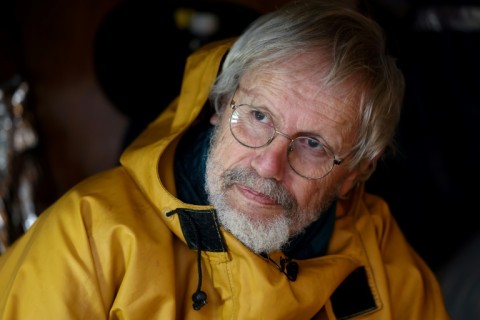


 Susan Santa Maria, Shutterstock
Pep Canadell, CSIRO; Corinne Le Quéré, University of East Anglia; Glen Peters, Center for International Climate and Environment Research - Oslo; Judith Hauck, Universität Bremen; Julia Pongratz, Ludwig Maximilian University of Munich; Pierre Friedlingstein, University of Exeter, and Robbie Andrew, Center for International Climate and Environment Research - Oslo
Susan Santa Maria, Shutterstock
Pep Canadell, CSIRO; Corinne Le Quéré, University of East Anglia; Glen Peters, Center for International Climate and Environment Research - Oslo; Judith Hauck, Universität Bremen; Julia Pongratz, Ludwig Maximilian University of Munich; Pierre Friedlingstein, University of Exeter, and Robbie Andrew, Center for International Climate and Environment Research - OsloCarbon dioxide (CO₂) emissions from fossil fuels continue to increase, year on year. This sobering reality will be presented to world leaders today at the international climate conference COP29 in Baku, Azerbaijan.
Our latest annual stocktake shows the world is on track to reach a new record: 37.4 billion tonnes of CO₂ emitted from fossil fuels in 2024. This is an increase of 0.8% from the previous year.
Adopting renewable energy and electric vehicles is helping reduce emissions in 22 countries. But it’s not enough to compensate for ongoing global growth in fossil fuels.
There were also signs in 2023 suggesting natural systems may struggle to capture and store as much CO₂ in the future as they have in the past. While humanity is tackling deforestation and the growth in fossil CO₂ emissions is slowing, the need to reach an immediate peak and decline in global emissions has never been so acute.
The Global Carbon Budget is an annual planetary account of carbon sources and sinks, which soak up carbon dioxide and remove it from the atmosphere.
We include anthropogenic sources from human activities such as burning fossil fuels or making cement as well as natural sources such as bushfires.
When it comes to CO₂ sinks, we consider all the ways carbon may be taken out of the atmosphere. This includes plants using CO₂ to grow and CO₂ being absorbed by the ocean. Some of this happens naturally and some is being actively encouraged by human activity.
Putting all the available data on sources and sinks together each year is a huge international effort involving 86 research organisations, including Australia’s CSIRO. We also use computer models and statistical approaches to fill out the remaining months to the end of the year.
This year’s growth in carbon emissions from fossil fuels is mainly from fossil gas and oil, rather than coal.
Fossil gas carbon emissions grew by 2.4%, signalling a return to the strong long-term growth rates observed before the COVID pandemic. Gas emissions grew in most large countries, but declined across the European Union.
Oil carbon emissions grew by 0.9% overall, pushed up by a rise in emissions from international aviation and from India.
The rebound in international air travel pushed aviation carbon emissions up 13.5% in 2024, although it’s still 3.5% below the pre-COVID 2019 level.
Meanwhile, oil emissions from the United States and China are declining. It’s possible oil emissions have peaked in China, driven by growth in electric vehicles.
Coal carbon emissions went up by 0.2%, with strong growth in India, small growth in China, a moderate decline in the US, and a large decline in the European Union. Coal use in the US is now at its lowest level in 120 years.
The United Kingdom closed its last coal power plant in 2024, 142 years after the first one was opened. With strong growth in wind energy replacing coal, the UK CO₂ emissions have almost been cut in half since 1990.
Carbon emissions also come from land clearing and degradation. But some of that CO₂ can be taken up again by planting trees. So we need to examine both sources and sinks on land.
Global net CO₂ emissions from land use change averaged 4.1 billion tonnes a year over the past decade (2014–23). This year is likely to be slightly higher than average with 4.2 billion tonnes, due to drought and fires in the Amazon. That amount represents about 10% of all emissions from human activities, the rest owing to fossil fuels.
Importantly, total carbon emissions – the sum of fossil fuel emissions and land-use change emissions – have largely plateaued over the past decade, but are still projected to reach a record of just over 41 billion tonnes in 2024.
The plateau in 2014–23 follows a decade of significant growth in total emissions of 2% per year on average between 2004 and 2013. This shows humanity is tackling deforestation and the growth of fossil CO₂ emissions is slowing. However, this is not enough to put global emissions on a downward trajectory.
 Annual CO₂ emissions continue to increase, reaching a record high in 2024. The shaded area around each line shows the uncertainty in the estimates. Global Carbon Project, CC BY
Annual CO₂ emissions continue to increase, reaching a record high in 2024. The shaded area around each line shows the uncertainty in the estimates. Global Carbon Project, CC BYFossil CO₂ emissions decreased in 22 countries as their economies grew. These countries are mainly from the European Union, along with the United States. Together they represent 23% of global fossil CO₂ emissions over the past decade (2014–23).
This number is up from 18 countries during the previous decade (2004–13). New countries in this list include Norway, New Zealand and South Korea.
In Norway, emissions from road transport declined as the share of electric vehicles in the passenger car fleet grew – the highest in the world at over 25% – and biofuels replaced fossil petrol and diesel. Even greater reductions in emissions have come from Norway’s oil and gas sector, where gas turbines on offshore platforms are being upgraded to electric.
In New Zealand, emissions from the power sector are declining. Traditionally the country has had a high share of hydropower, supplemented with coal and natural gas. But now wind and particularly geothermal energy is driving fossil generation down.
We are projecting further emissions growth of 0.2% in China, albeit small and with some uncertainty (including the possibility of no growth or even slight decline). China added more solar panels in 2023 than the US did in its entire history.
 Individual country emissions vary widely, but there are some signs of progress towards decarbonisation. Global Carbon Budget 2024/Global Carbon Project, CC BY-ND
Individual country emissions vary widely, but there are some signs of progress towards decarbonisation. Global Carbon Budget 2024/Global Carbon Project, CC BY-NDIn the 1960s, our activities emitted an average of 16 billion tonnes of CO₂ per year globally. About half of these emissions (8 billion tonnes) were naturally removed from the atmosphere by forests and oceans.
Over the past decade, emissions from human activities reached about 40 billion tonnes of CO₂ per year. Again, about half of these emissions (20 billion tonnes) were removed.
In the absence of these natural sinks, current warming would already be well above 2°C. But there’s a limit to how much nature can help.
In 2023, the carbon uptake on land dropped 28% from the decadal average. Global record temperatures, drought in the Amazon and unprecedented wildfires in the forests of Canada were to blame, along with an El Niño event.
As climate change continues, with rising ocean temperatures and more climate extremes on land, we expect the CO₂ sinks to become less efficient. But for now, we expect last year’s land sink decline will recover to a large degree as the El Niño event has subsided.
 About half of the CO₂ emissions were removed from the atmosphere by forests and oceans. When we tally up all of the sources compared to the sinks, the budget should balance. We find a slight imbalance of 1.6Gt/year due to limitations of the data. Global Carbon Budget 2024/Global Carbon Project, CC BY
About half of the CO₂ emissions were removed from the atmosphere by forests and oceans. When we tally up all of the sources compared to the sinks, the budget should balance. We find a slight imbalance of 1.6Gt/year due to limitations of the data. Global Carbon Budget 2024/Global Carbon Project, CC BYOur latest carbon budget shows global fossil fuel emissions continue to increase, further delaying the peak in emissions. Global CO₂ emissions continue to track in the middle of the range of scenarios developed by the Intergovenmental Panel on Climate Change (IPCC). We have yet to bend the emissions curve into the 1.5–2°C warming territory of the Paris Agreement.
This comes at a time when it’s clear we need to be reducing emissions, to avoid worsening climate change.
We also identified some positive signs, such as the rapid adoption of renewable energy and electric cars as they become cheaper and more accessible, supporting the march toward a net-zero emissions pathway. But turning these trends into global decarbonisation requires a far greater level of ambition and action.![]()
Pep Canadell, Chief Research Scientist, CSIRO Environment; Executive Director, Global Carbon Project, CSIRO; Corinne Le Quéré, Royal Society Research Professor of Climate Change Science, University of East Anglia; Glen Peters, Senior Researcher, Center for International Climate and Environment Research - Oslo; Judith Hauck, Helmholtz Young Investigator group leader and deputy head, Marine Biogeosciences section at the Alfred Wegener Institute, Universität Bremen; Julia Pongratz, Professor of Physical Geography and Land Use Systems, Department of Geography, Ludwig Maximilian University of Munich; Pierre Friedlingstein, Chair, Mathematical Modelling of Climate, University of Exeter, and Robbie Andrew, Senior Researcher, Center for International Climate and Environment Research - Oslo
This article is republished from The Conversation under a Creative Commons license. Read the original article.